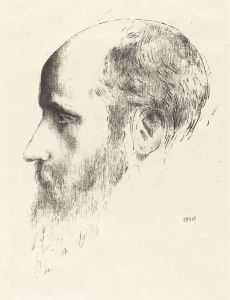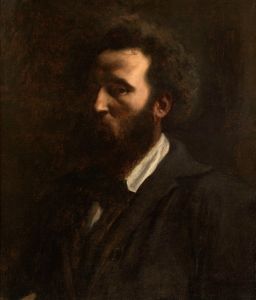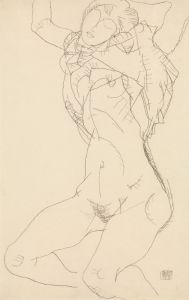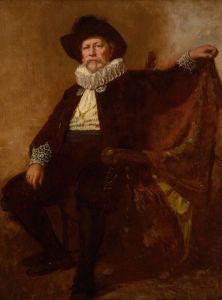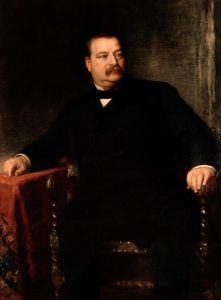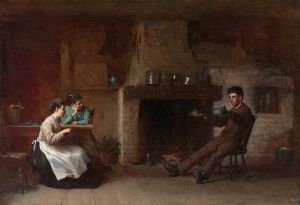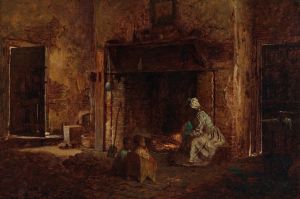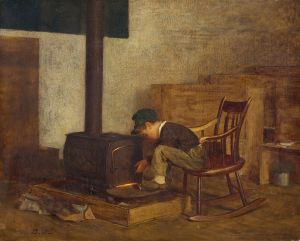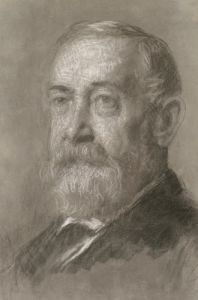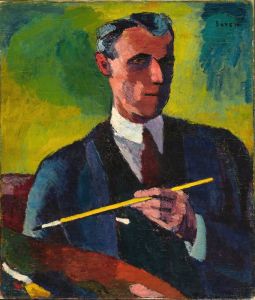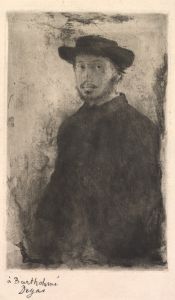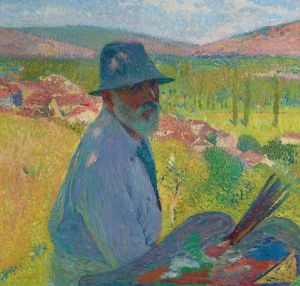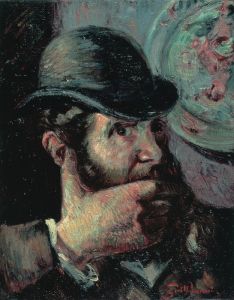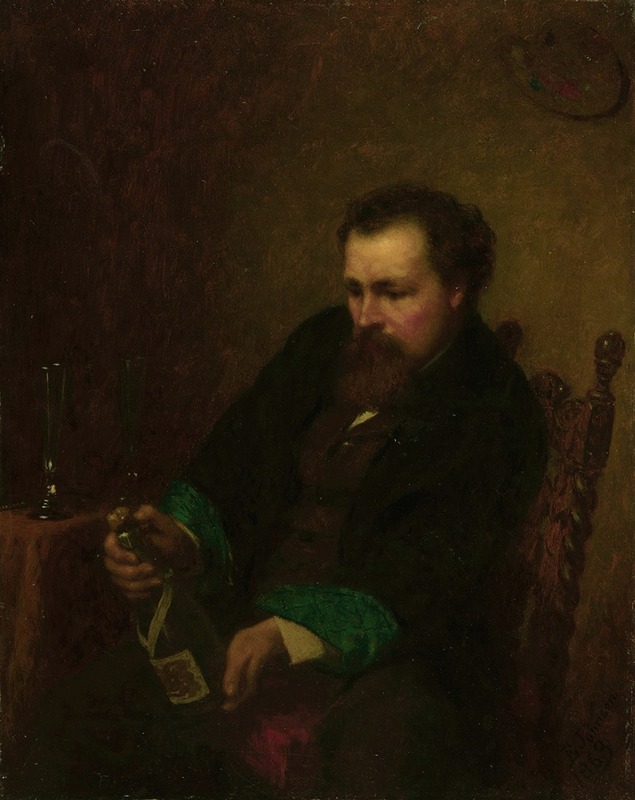
Self-Portrait
A hand-painted replica of Eastman Johnson’s masterpiece Self-Portrait, meticulously crafted by professional artists to capture the true essence of the original. Each piece is created with museum-quality canvas and rare mineral pigments, carefully painted by experienced artists with delicate brushstrokes and rich, layered colors to perfectly recreate the texture of the original artwork. Unlike machine-printed reproductions, this hand-painted version brings the painting to life, infused with the artist’s emotions and skill in every stroke. Whether for personal collection or home decoration, it instantly elevates the artistic atmosphere of any space.
Eastman Johnson, an influential American painter of the 19th century, is renowned for his genre scenes and portraits that capture the essence of American life during his time. Among his notable works is a self-portrait that offers insight into his artistic style and personal identity. While specific details about the self-portrait, such as its creation date or current location, are not widely documented, Johnson's body of work and his impact on American art provide a context for understanding this piece.
Eastman Johnson was born in 1824 in Lovell, Maine, and he showed an early interest in art. He honed his skills in the United States before traveling to Europe in the mid-19th century, where he studied at prestigious institutions and was influenced by the works of the Old Masters. His time in Europe, particularly in Düsseldorf and The Hague, significantly shaped his artistic approach, blending European techniques with American themes.
Johnson's self-portrait is a reflection of his mastery in capturing the human likeness and character. Known for his attention to detail and ability to convey the personality and mood of his subjects, Johnson's self-portrait likely exhibits these qualities. His portraits often reveal a deep understanding of the sitter, achieved through meticulous observation and a nuanced use of light and shadow.
Throughout his career, Johnson was celebrated for his genre paintings, which depicted everyday life in America, including scenes of rural life, domestic interiors, and African American subjects. His works often carried a narrative quality, providing a glimpse into the social and cultural dynamics of the 19th century. This narrative element may also be present in his self-portrait, offering viewers a story about the artist himself.
Johnson's contribution to American art extends beyond his paintings. He was a founding member of the Metropolitan Museum of Art in New York City, reflecting his commitment to the development and appreciation of art in America. His legacy is evident in the way he captured the spirit of his time, providing future generations with a visual record of 19th-century American life.
While specific information about the self-portrait by Eastman Johnson may be limited, understanding his broader oeuvre and influence allows for an appreciation of the work's potential significance. His self-portrait, like his other works, likely serves as a testament to his skill as a portraitist and his ability to convey the complexities of human experience through art.





